Abstract Solution: Developing ideas & experiments
With our problems decided on, it became time to start thinking of solutions. The Nielsen Norman Group defines this process of ideation as follows:
Ideation is the process of generating a broad set of ideas on a given topic, with no attempt to judge or evaluate them.
This part of the process is once again divergent in nature: we broaden our view and go all out with utopian "what if" scenarios. Popular methods include brainstorming, SCAMPER, and reverse thinking (Stevens, 2019).
Notably, the Double Diamond Revamped (Nessler, 2016) does include a piece of convergence here in the form of evaluation of the ideas: big ideas need to be pulled back into reality.
What we did
To kickstart the creative process, team member Wesley organised a brainstorming session he called the Wexperience – combining various techniques (Crazy 8's, Make It Evil, and feedback rounds) to generate many creative ideas quickly. It was a lot of fun to do together!
Later, we would again use Crazy 8's to come up with ideas individually, and then used Dotmocracy to vote on our favourites. To evaluate, we created our own Viability & Feasibility Map. One idea not only got the most votes but also stood out as the clear winner in the map: A "Kickstarter for clothes".
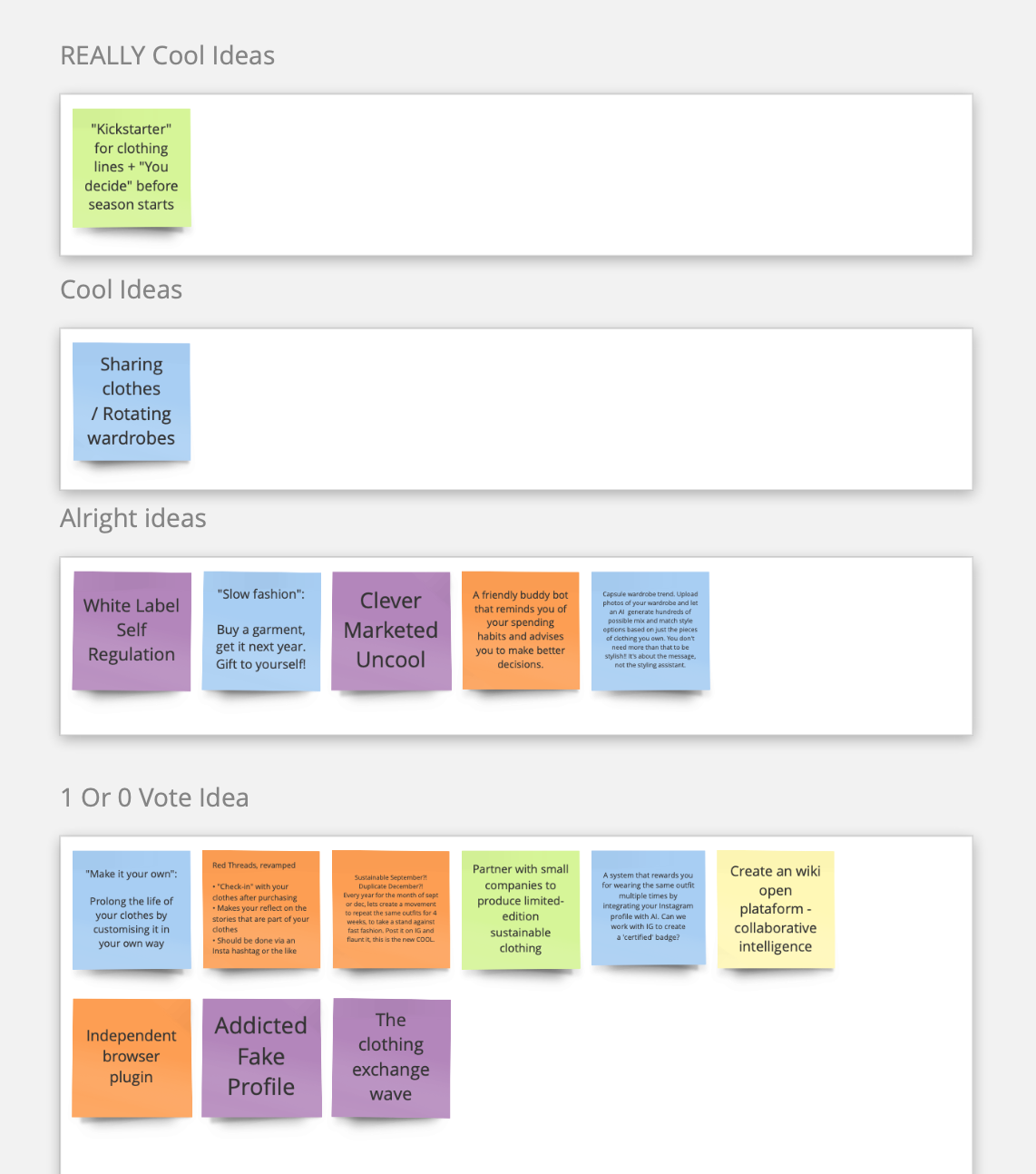
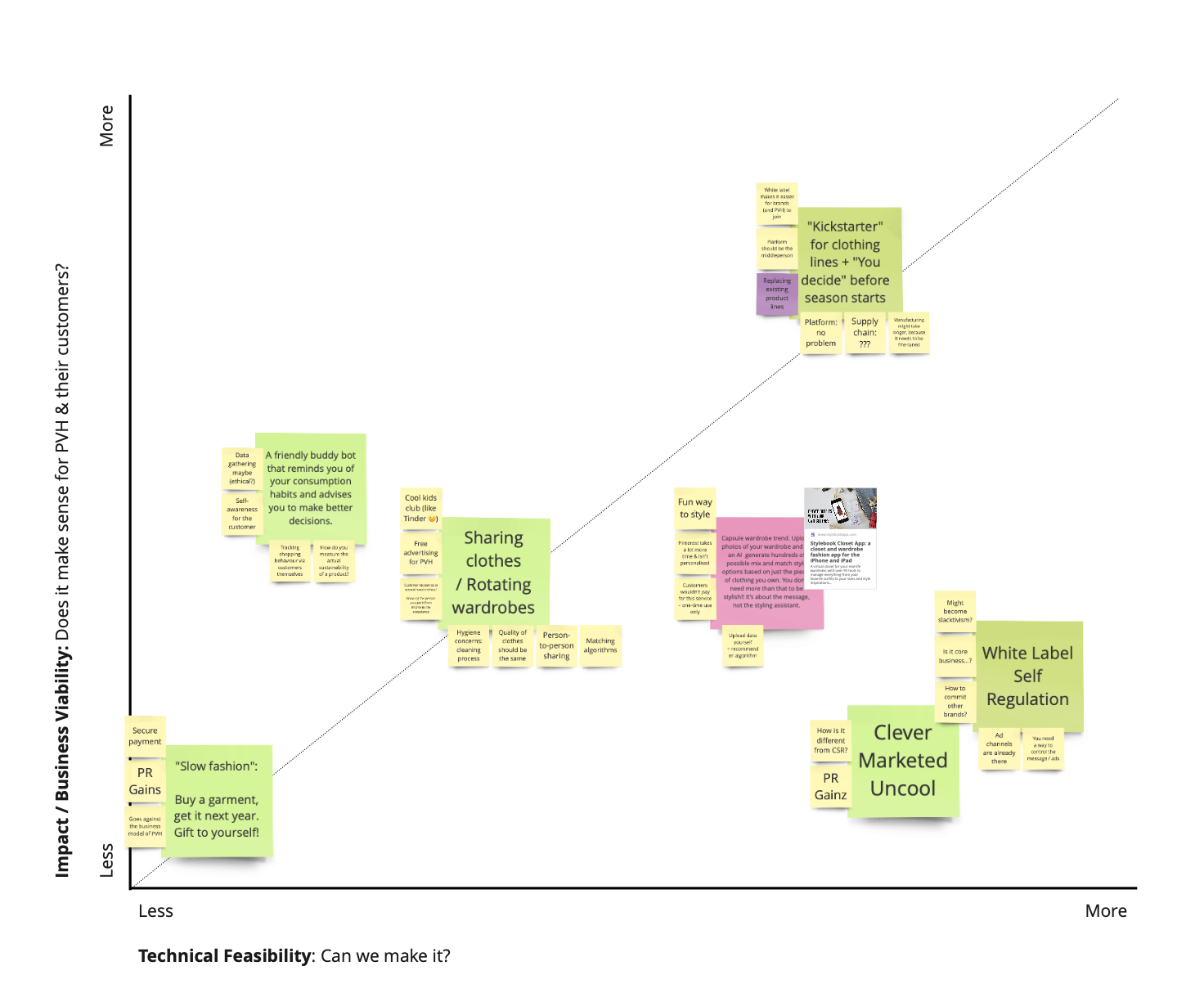
To get a better understanding of our final idea, check out these slides from the Handover Package to the client:
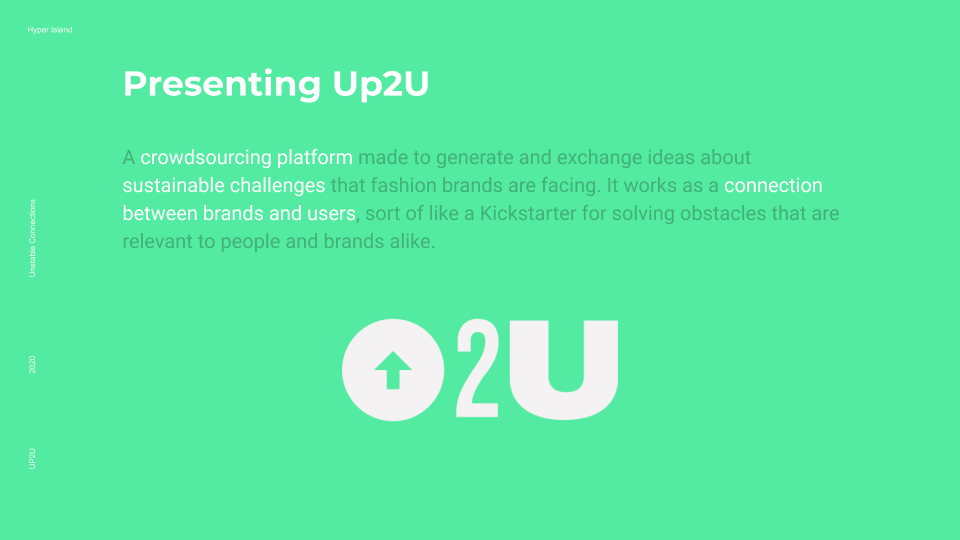
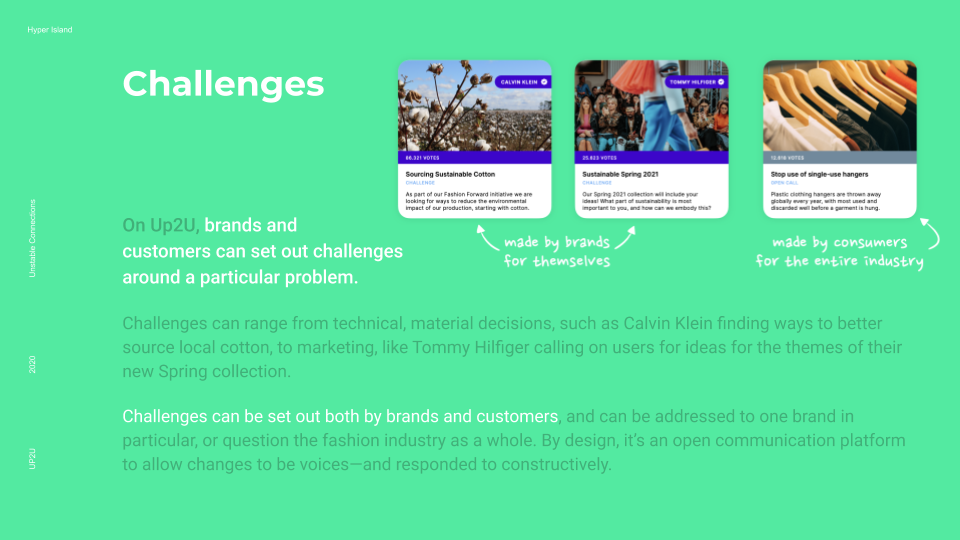
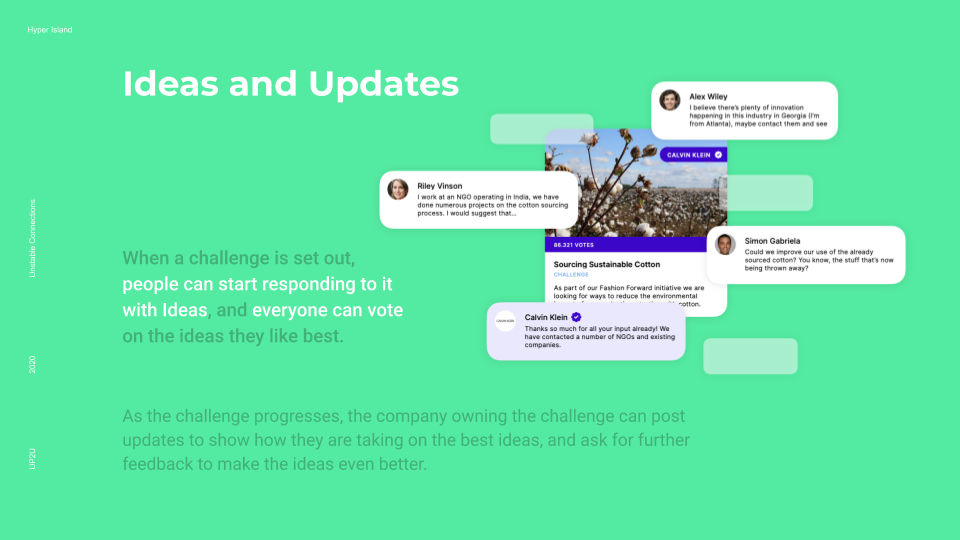
Make It Evil
Source: (Vetan, 2019)
What is it
A version of the "reverse thinking" brainstorm technique in which the problem is turned on its head and, in this case, made as evil as possible. Instead of solving the problem, we tried to make the problem worse and worse, and were encouraged to illustrate our ideas.
Reflection
It was ridiculously fun to flip the idea around, and I noticed how much more creative I became by thinking of intricate evil schemes around my idea! Translating it back into a "good" solution was a fun activity to do together as well, and proved quite easy.

Viability & Feasibility Map
Source: (Vetan, 2019)
What is it
A graphic to visualise the viability and feasibility of different ideas.
Viability relates to how much impact the idea will have on both the business and its customers. We discussed whether the idea made sense to PVH. Would it generate revenue? Would customers be interested? Would it align with PVH values?
Feasibility relates to how possible it is to execute the idea within the technology landscape. What existing or new infrastructure would need to be made?
Reflection
This exercise made me look critically at the dream I had grown attached to. We noticed we let our assumptions lead in the viability aspects especially – It's important to base the judgments on real data about the company, users, and the industry.
